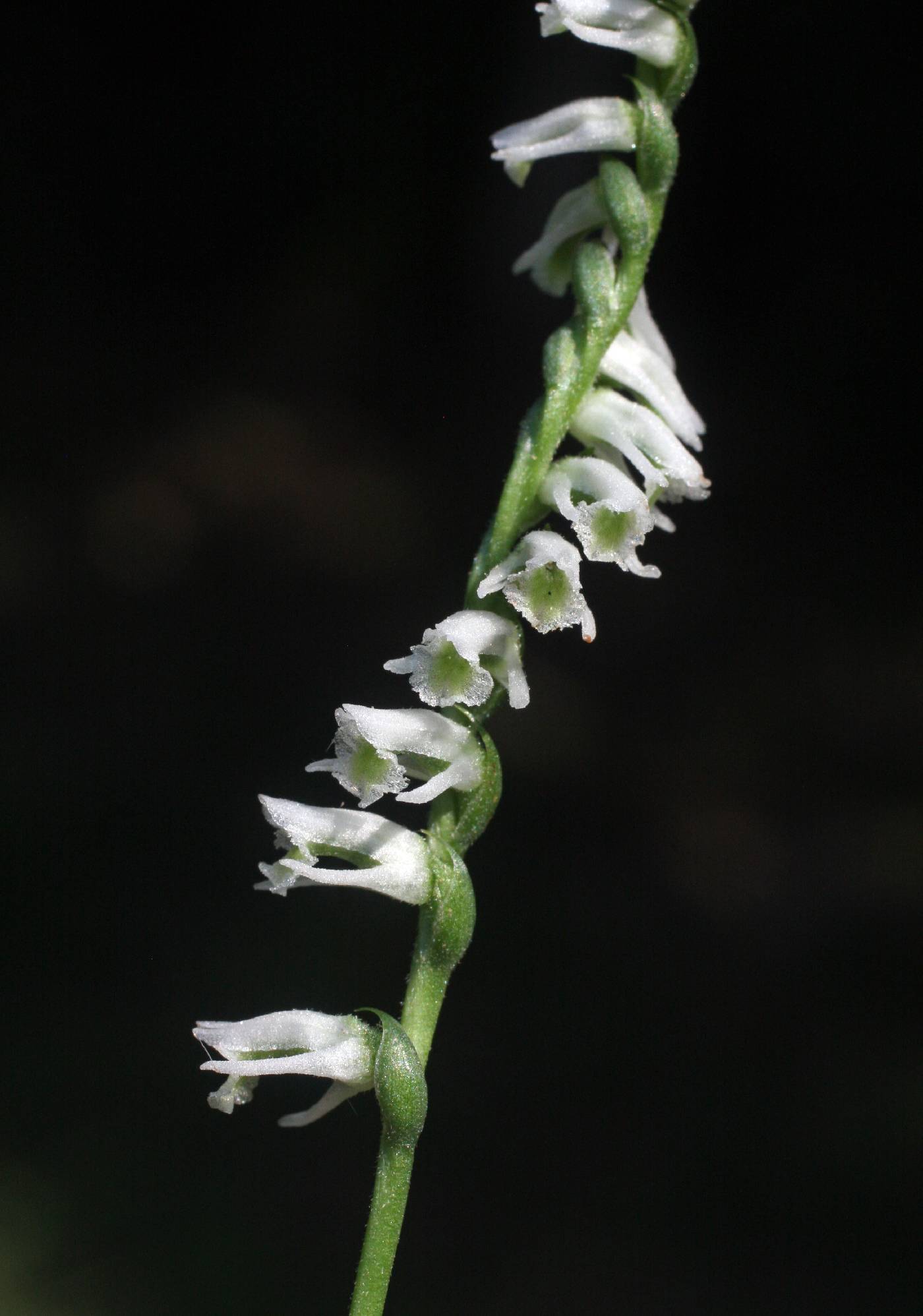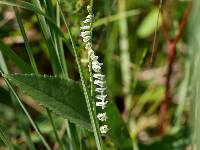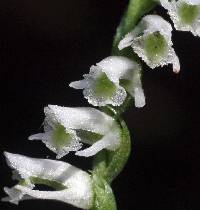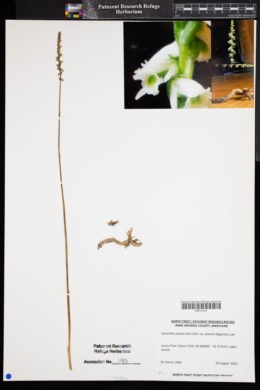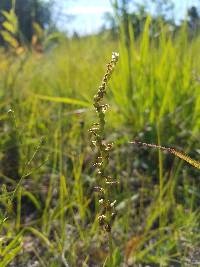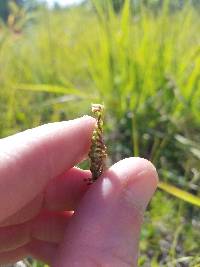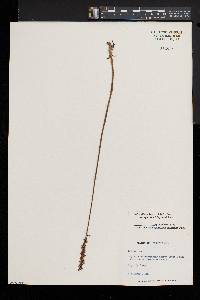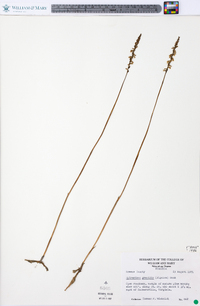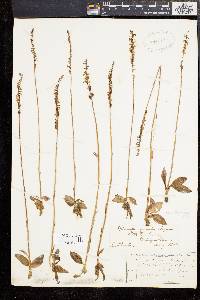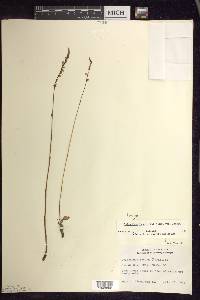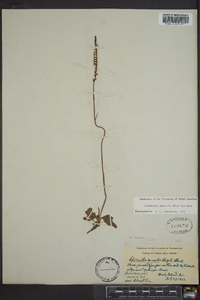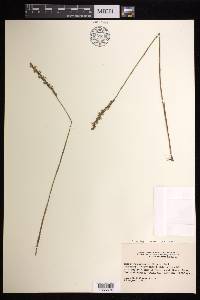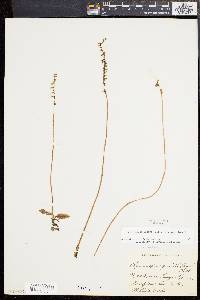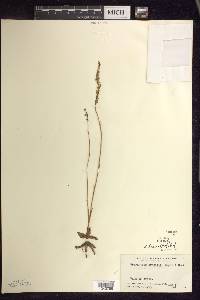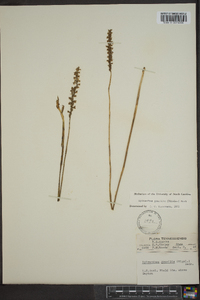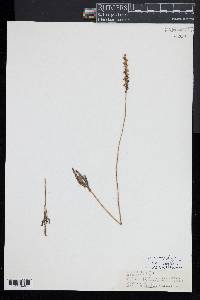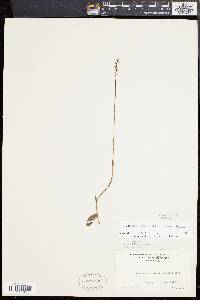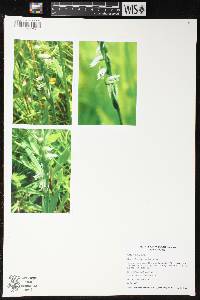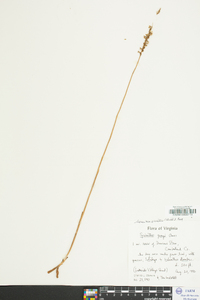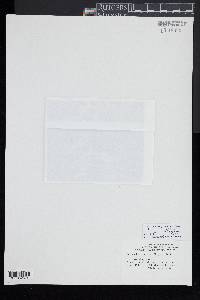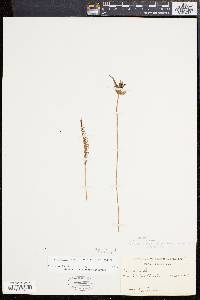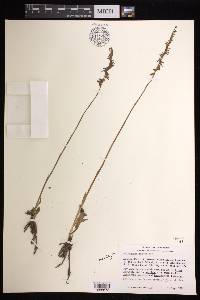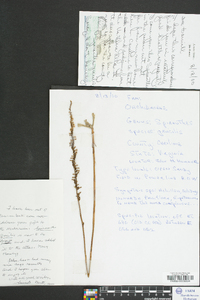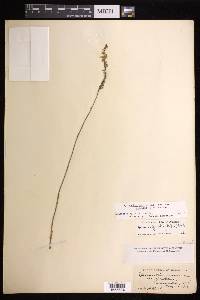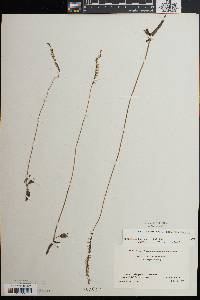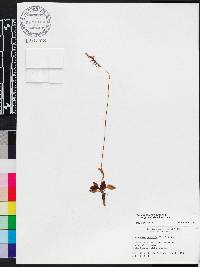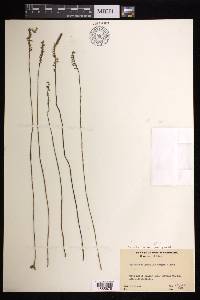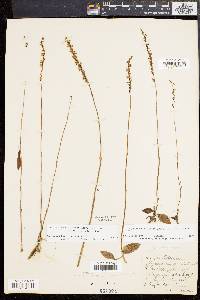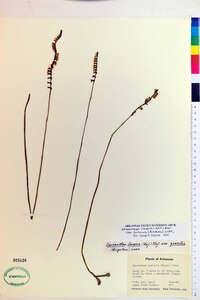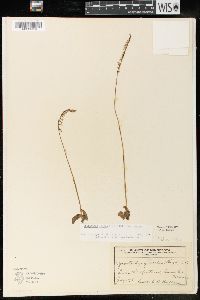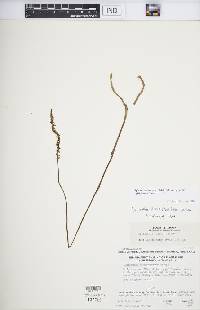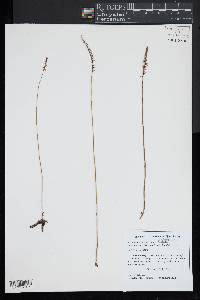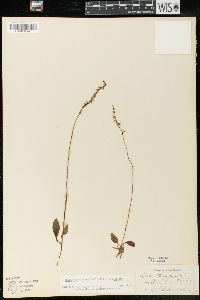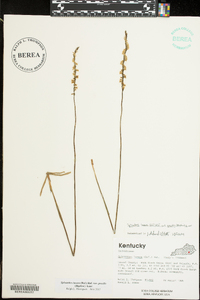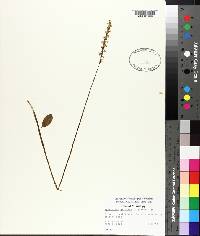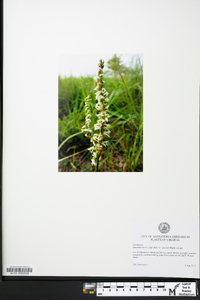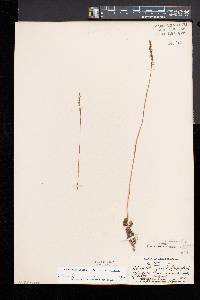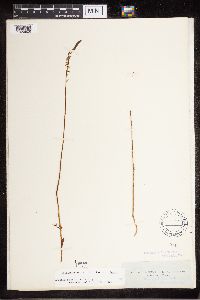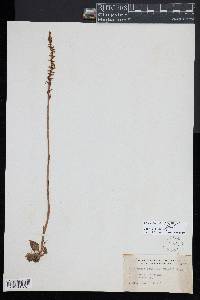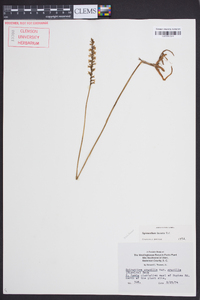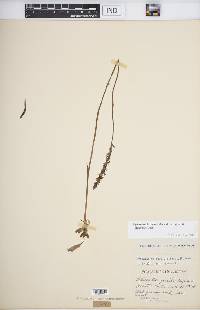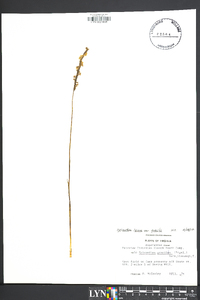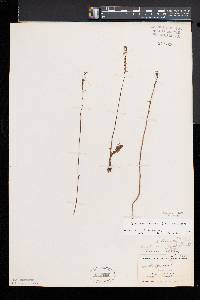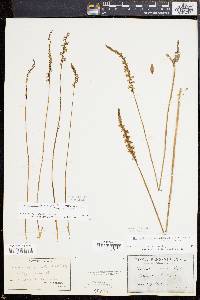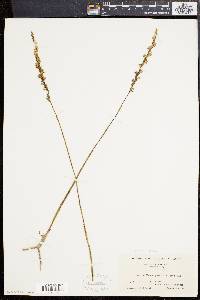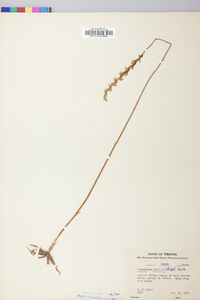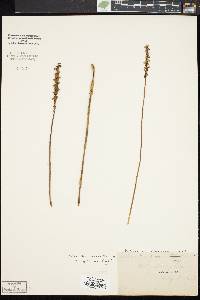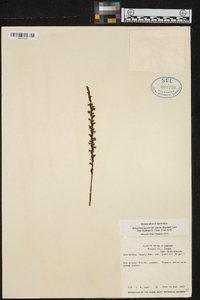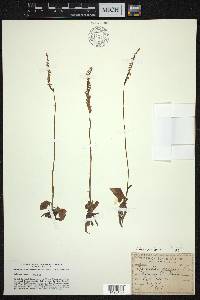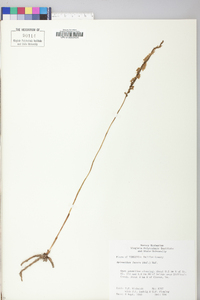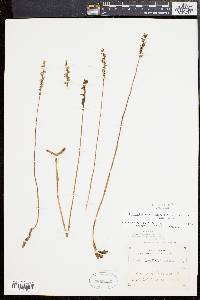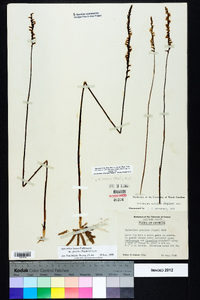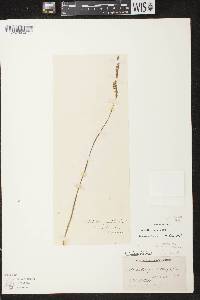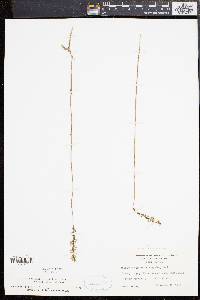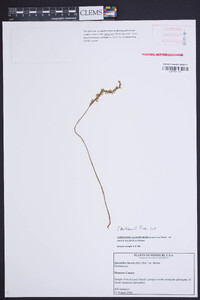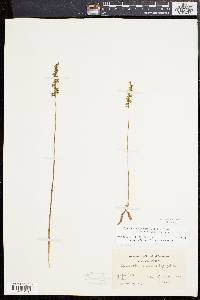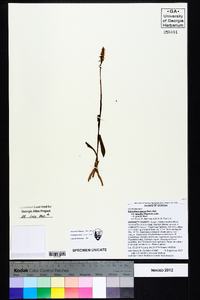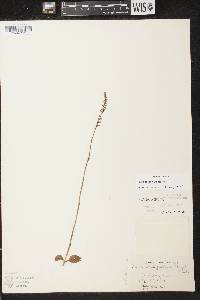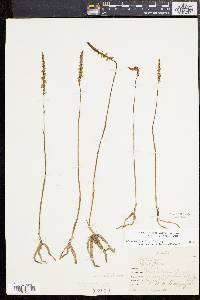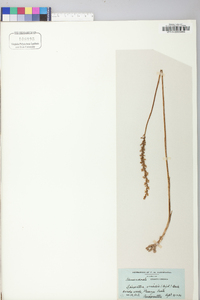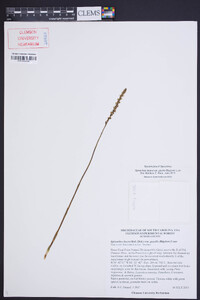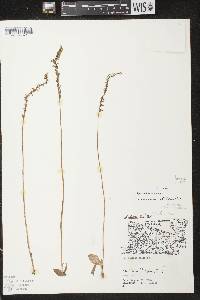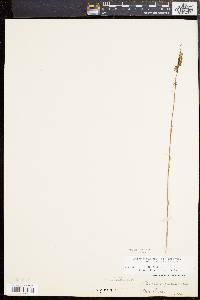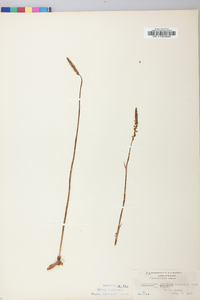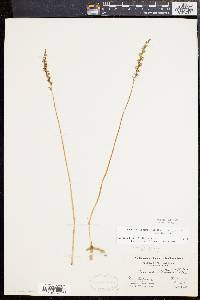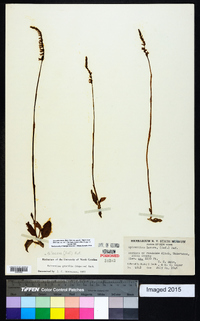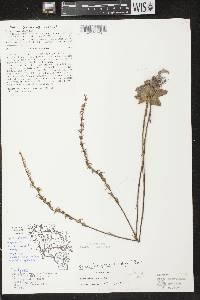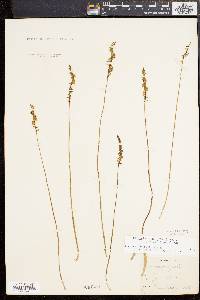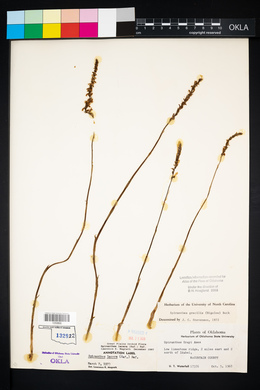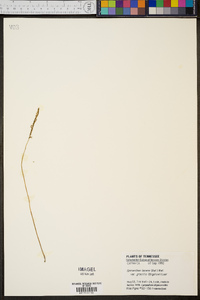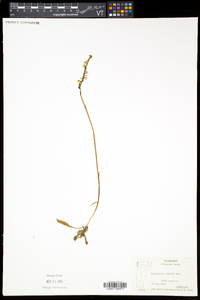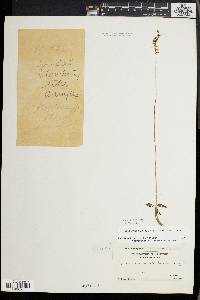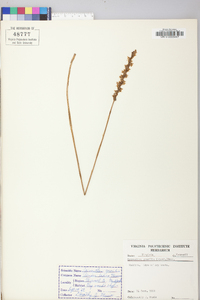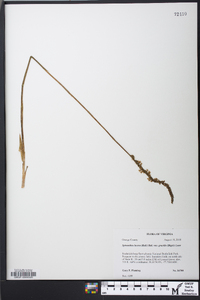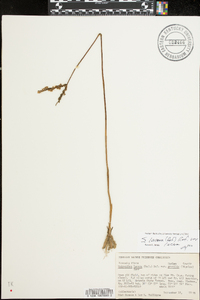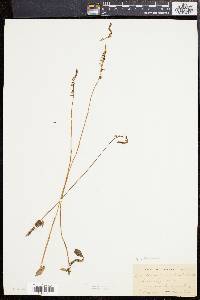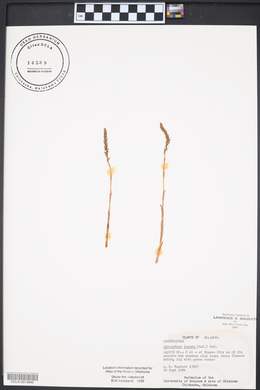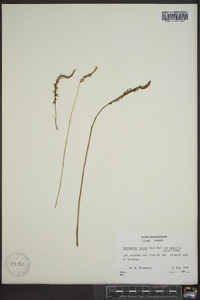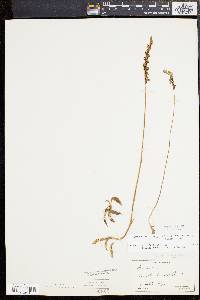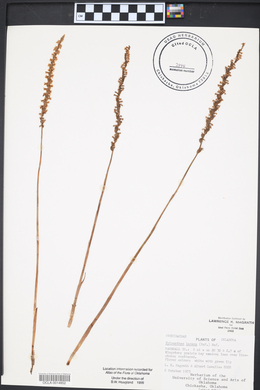
|
|
|
|
Family: Orchidaceae
Northern Slender Ladies'-Tresses, more...northern slender lady's tresses
|
Plants 15-65 cm. Roots few-several, spreading to descending, mostly to 0.75 cm diam., slender to stout. Leaves, basal, spreading, obovate, 2-5 × 1-2 cm. Spikes secund to tightly spiraled, 8-10 flowers per cycle of spiral; rachis glabrous to sparsely pubescent, trichomes capitate to clavate, glands obviously stalked. Flowers white; sepals somewhat spreading, distinct to base, elliptic, 5 × 1 mm; lateral sepals white throughout, apex acuminate; petals lanceolate, slightly oblique, 5 × 1 mm; lip white with green or yellowish green center, ovate to oblong, 5 × 2.5 mm, apex dilated, its margin crisped-crenate, pubescent; veins obscure; basal calli erect, short-pointed, mostly to 1 mm; viscidium linear-lanceolate; ovary mostly 3 mm. Seeds monoembryonic. Perennial herb 15 - 65 cm tall Stem: single, erect, green, lacking leaves except at base, and usually hairless below but sometimes with round-tipped hairs above. Leaves: two to four in basal rosette, spreading, stalked, hairless, non-toothed, 2 - 5 cm long, 1 - 2 cm wide, widely lance-shaped to inversely egg-shaped. The leaves wither and die back before flowering time. Inflorescence: a single, erect, terminal, elongate, partly one-sided to tightly spiraled spike of 20 to 50 flowers. The flowers of the typical variety are usually arranged in a loose spiral with eight to ten flowers per full turn around the axis, and the lowermost flowers are typically spaced widely apart. Axis hairless or with club-shaped to round-tipped hairs and stalked glandular-hairs. Flowers: white, bilaterally symmetric, around 5 mm long (above ovary), slenderly urn-shaped, with spreading sepals, forward projecting lip with deflexed tip, but lacking a spur at base. The reproductive parts of stamens, stigma and style are fused into a column above the 3 mm long inferior ovary. Sepals: three, petal-like, white, somewhat spreading, to 5 mm long and 1 mm wide, and tapering to pointed tips. Roots: few to several, spreading to descending, slender to stout (mostly up to 0.75 cm diameter). Lateral petals: two, white, to 5 mm long and 1 mm wide, lance-shaped with blunt-angled tips. Lip petal: one, central, lowermost, deflexed at tip, white with green or yellowish center (in typical variety never extending to tip), often hairy, crisp wavy-edged, 3 - 5 mm long, 1 - 2.5 mm wide, egg-shaped to oblong with obviously widened tip. The veins along the lip are obscure, but the two, small (up to 1 mm tall), short-pointed, erect, basal projections (calli) are visible. Similar species: We have both the typical variety of Spiranthes lacera as described above, and S. lacera var. gracilis , which is distinguished by being entirely hairless, the inflorescence has the flowers more evenly spaced and much more densely spiraled, and the darker color on the lip petal is very wide and extends almost to the tip. Flowering: mid-July through September Habitat and ecology: Local, in sandy prairies and black oak savannas, but also can be found in damp ground along dunes and beaches at least to the north of our area. Occurence in the Chicago region: native Notes: The typical variety of this species tends to flower earlier (mid July to mid-August) than S. lacera var. gracilis, which tends to start flowering in mid-August (Case 1987). Etymology: Spiranthes comes from the Greek words spir meaning coiled, and anthes meaning flowers, thus referring to the spiral arrangement of the flowers in the inflorescence. Lacera comes from the Latin word lacerare, meaning torn or mangled, or "having irregular edges", in reference to the irregularly wavy-edged lip petal. Author: The Field Museum Slender, 1-4 dm; basal lvs ovate-elliptic or ovate- lanceolate, petiolate, spreading to form a rosette (but sometimes withering early), 1-6 נ0.6-3 cm; cauline sheaths (3)4-7, essentially bladeless; infl 3-15+ cm, its axis sparsely and minutely glandular-hairy especially upwards (hairs 0.1-0.2 mm), the fls in a single loose or compact spiral, spreading or somewhat declined, subcylindric, small, 3.5-6.5 mm, white except for the large green central spot on the lip; lip broadly oblong, erose at the rounded-subtruncate summit, its basal callosities 0.5-1 mm, higher than thick; 2n=30. Open, sandy places, often with pines; N.S. and N.B. to Sask., s. to Fla. and Tex. Two ill-defined vars. with broadly overlapping range: Var. lacera, with loose infl, lvs persistent at anthesis, and fl early (July), is northern, s. to Va., Tenn., and Mo. Var. gracilis (Bigelow) Luer, with denser infl, lvs withered by the time of anthesis, and fl late (Aug., Sept.) is southern, n. to s. N.H., c. Vt., s. Wis., and Nebr. (S. gracilis) Gleason, Henry A. & Cronquist, Arthur J. 1991. Manual of vascular plants of northeastern United States and adjacent Canada. lxxv + 910 pp. ©The New York Botanical Garden. All rights reserved. Used by permission. |
|
|
|

